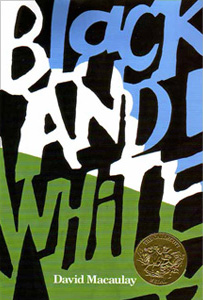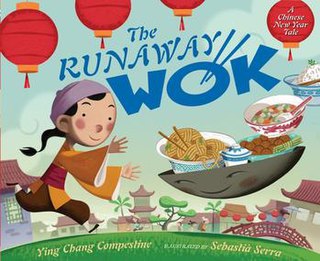
Scholastic Corporation is an American multinational publishing, education, and media company that publishes and distributes books, comics, and educational materials for schools, teachers, parents, children, and educational institutions. Products are distributed via retail and online sales and through schools via reading clubs and book fairs. Clifford the Big Red Dog, a character created by Norman Bridwell in 1963, serves as Scholastic's official mascot.

Goosebumps is a series of horror novels written by American author R. L. Stine. The protagonists in these stories are tweens or young teens who find themselves in frightening circumstances, often involving the supernatural, the paranormal, or the occult. Between 1992 and 1997, 62 books were published under the Goosebumps umbrella title. R. L. Stine also wrote various spin-off series, including, Goosebumps Series 2000, Give Yourself Goosebumps, Tales to Give You Goosebumps, Goosebumps Triple Header, Goosebumps HorrorLand, Goosebumps Most Wanted and Goosebumps SlappyWorld. Additionally there was a series called Goosebumps Gold that was never released.

Antiqua is a style of typeface used to mimic styles of handwriting or calligraphy common during the 15th and 16th centuries. Letters are designed to flow, and strokes connect together in a continuous fashion; in this way it is often contrasted with Fraktur-style typefaces where the individual strokes are broken apart. The two typefaces were used alongside each other in the germanophone world, with the Antiqua–Fraktur dispute often dividing along ideological or political lines. After the mid-20th century, Fraktur fell out of favor and Antiqua-based typefaces became the official standard in Germany.
Leo Dillon and Diane Dillon were American illustrators of children's books and adult paperback book and magazine covers. One obituary of Leo called the work of the husband-and-wife team "a seamless amalgam of both their hands". In more than 50 years, they created more than 100 speculative fiction book and magazine covers together as well as much interior artwork. Essentially all of their work in that field was joint.

Speech balloons are a graphic convention used most commonly in comic books, comics, and cartoons to allow words to be understood as representing a character's speech or thoughts. A formal distinction is often made between the balloon that indicates speech and the one that indicates thoughts; the balloon that conveys thoughts is often referred to as a thought bubble or conversation cloud.
Donna Jo Napoli is an American writer of children's and young adult fiction, as well as a linguist. She currently is a professor at Swarthmore College teaching Linguistics in all different forms .She has also taught linguistics at Smith College, the University of North Carolina at Chapel Hill, Georgetown University, the University of Michigan at Ann Arbor, the University of Pennsylvania,

Kazuhiro "Kazu" Kibuishi is a Japanese-born American graphic novel author and illustrator. He is best known for being the creator and editor of the comic anthology Flight and for creating the webcomic Copper. He is also the author and illustrator of the Amulet series.

Mary GrandPré is an American illustrator best known for her cover and chapter illustrations of the Harry Potter books in their U.S. editions published by Scholastic. She received a Caldecott Honor in 2015 for illustrating Barb Rosenstock's The Noisy Paint Box: The Colors and Sounds of Kandinsky's Abstract Art. GrandPré, who creates her artwork with paint and pastels, has illustrated more than twenty books and has appeared in gallery exhibitions and periodicals such as The New Yorker, Atlantic Monthly, and The Wall Street Journal.

In typography, a slab serif typeface is a type of serif typeface characterized by thick, block-like serifs. Serif terminals may be either blunt and angular (Rockwell), or rounded (Courier). Slab serifs were introduced in the early nineteenth century.
Esther R. Hautzig was a Polish-born American writer, best known for her award-winning book The Endless Steppe (1968).

Black and White is a 1990 postmodern children's picture book by David Macaulay. Published by Houghton Mifflin Company, it received mixed reviews upon its release, but it was the recipient of the Caldecott Medal for illustration in 1991. The book tells four overlapping stories, each drawn with a distinct visual style. The four stories are "Seeing Things", about a boy on a train trip by himself, "Problem Parents", about siblings whose parents behave differently one night, "A Waiting Game", about people waiting for a train, and "Udder Chaos", about cows who escape and then return to their field.
Aliki Liacouras Brandenberg or pen name Aliki is an American author and illustrator of books for children.
Emilie Boon is a Dutch-American children's author and illustrator. She was born in the Netherlands and has studied at the Royal Academy of Art at The Hague. Her books include Belinda's Balloon and the Peterkin series. The first in the series, Peterkin Meets a Star, has been made into an iPad and iPhone application. Boon has had books published by a number of publishers and in 8 languages. She has illustrated many books in collaboration with children's author, Harriet Ziefert, including the "Little Hippo" series. Boon has worked for Houghton Mifflin to illustrate online leveled readers that teach reading skills and improve content knowledge attainment. She teaches children's book illustration at the Rhode Island School of Design.

The Lion & the Mouse is a 2009 nearly wordless picture book illustrated by Jerry Pinkney. This book, published by Little, Brown and Company, tells Aesop's fable of The Lion and the Mouse. In the story, a mouse's life is a spared by a lion. Later, after the lion is trapped, the mouse is able to set the lion free. Adapting the fable, with the moral that the weak can help the strong, as a wordless picture book was seen as a successful way of overcoming the brief plot generally found in the source stories. While it was Pinkney's first wordless picture book, it was not the first time he had told the story, having previously included it in his Aesop's Fables, published in 2000. Pinkney, who had received five Caldecott Honors, became the first African American to win the Caldecott Medal for his illustrations in this book. His illustrations were generally praised for their realism and sense of place. The cover illustrations, featuring the title characters but no text, drew particular praise.
DyAnne DiSalvo (DiSalvo-Ryan) is an American artist and author of children's literature, best known for her string of books that focus on building better communities, including City Green and Uncle Willie and the Soup Kitchen. DiSalvo is the illustrator of more than 50 books for children.
Comics has developed specialized terminology. Several attempts have been made to formalize and define the terminology of comics by authors such as Will Eisner, Scott McCloud, R. C. Harvey and Dylan Horrocks. Much of the terminology in English is under dispute, so this page will list and describe the most common terms used in comics.
Katherine Fajardo is an American cartoonist and author. She is known for her book cover illustrations and comics that focus on Latino culture and self-acceptance. Her debut middle grade graphic novel Miss Quinces, which is a National Indie Bestseller, was the first Graphix title to be simultaneously published in English and Spanish.

The Runaway Wok is a children's picture book written by Ying Chang Compestine and illustrated by Sebastia Serra. Published in 2011 by Dutton Children's Books, the story follows a boy named Ming and his adventures with a magical talking wok who grants wishes. The story portrays the rich family as evil and the poor family as heroic.

Crown: An Ode to the Fresh Cut is a 2017 picture book by Derrick Barnes, illustrated by Gordon C. James. The book, Barnes' first picture book, is a poem describing a boy's feelings and experience while getting a haircut. James, who was not the first choice to be the illustrator, wanted the oil color illustrations to have the feel of fine art.
Lauren Marriott is a New Zealand illustrator, comics artist, sculptor and graphic designer. She often draws under the pseudonym Ralphi.











